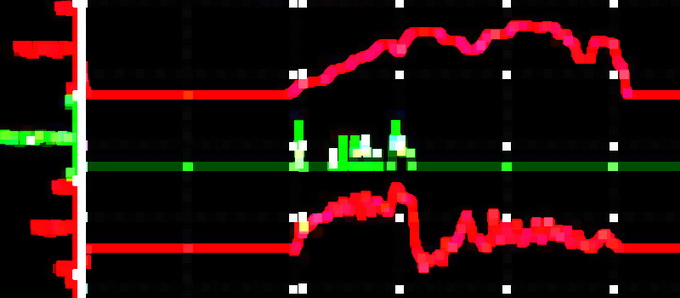 NEMESIS TCS
NEMESIS TCS
Sophisticated Traction Control
.....................
Finally a good working "stand alone" Traction Control Unit is on Market.
Nemesis with the TCS System closed the Gap between Hobby-Traction Control Systems ( Bazzaz, Grip one, and similar), and the real professional Units like Marelli, Motec or PI.
Available at present for some selected Ducati, KTM, NCR and Moto Guzzi Models, but more will follow !
The Nemesis combined TC Strategies: Cut, Retard, Pulse mode
Depending on the amount of wheel slip seen by the TCS and the position in the
corner, the TCS produces one of 16
responses ranging from different levels of ignition retard, then on to retard
and cuts, followed by retard and pulsed
ignition cuts giving longer recovery periods coupled to short power bursts and
finally to 85% ignition cut.
The five stages of slip control :
-
The bike is at mid corner and neither accelerating nor
braking. The lean angle is at maximum and the
throttle is closed. TCS system is not active.
-
The throttle is opened by the rider which is sensed by the
TCS and traction control begins when the sensor
voltage exceeds a map specific limit (equal to approx 3deg of throttle
opening).
-
Sensors within the TCS see that the bike is at mid corner
and a very close slip control setting is applied.
This setting will be aggressive enough to remove slip but still allow
forward momentum. It is not unusual for
a momentary high slip value to occur at this point as the transmission
backlash is taken up and the resulting
shock brakes traction. For this reason we may apply a short ignition cut at
this point in certain maps.
-
As the bike starts to accelerate and lift up out of the
corner, sensors within TCS monitor this and apply
different slip corrections
-
With the bike upright and accelerating hard the TCS is still
working but will not intervene unless the slip
levels indicate a problem. So how much slip should there be?
Firstly, without any slip (rear wheel faster than front) there is no
propulsion so the system needs to know what is
normal and what is excessive. Each tyre model has its own set of
characteristics and equally importantl is the rolling
circumference profile at different lean angles.
To give you an example of this, a tyre can generate up to 4% of measured
slip just as a function of banking over and the
circumference profile changing. This is why it is so important for the TCS
system to make corrections based on corner position.
Within the TCS are pre-defined slip maps to suit your tyres and bike.
Each of the nine slip maps within the TCS will have a different table to
cope with different riding styles and track conditions.
This combined Traction Control Strategy can not
be found on any other Traction Control System for Motorcycles on Market !
Why this System closed the Gap, read...

 ENGLISH
ENGLISH
 DEUTSCH
DEUTSCH
